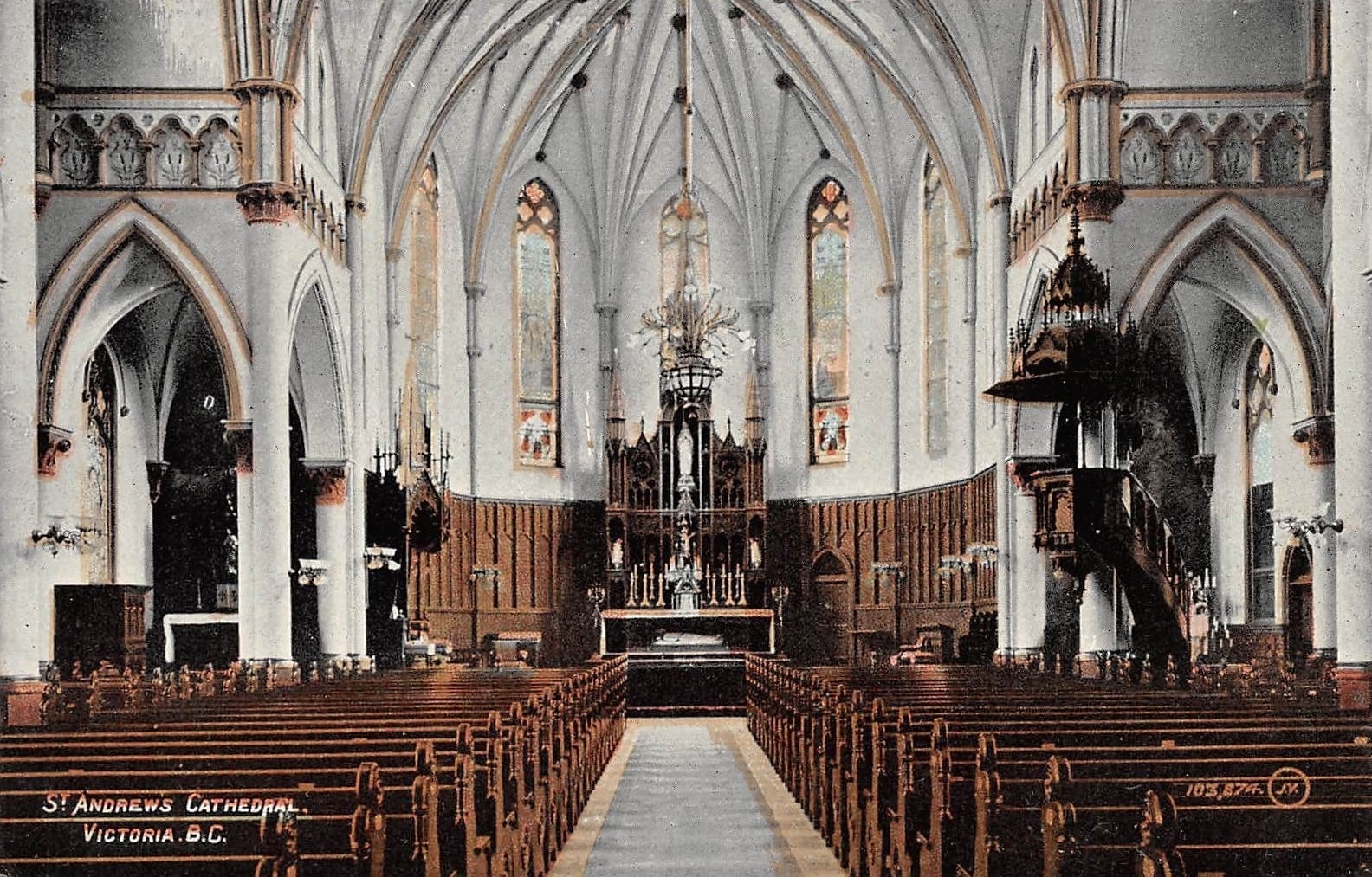Victoria’s valuable francophone heritage

When the Hudson’s Bay Company built Fort Victoria, a trading post on the south point of Vancouver Island, in 1843, many of the employees were francophone. The Fort’s commander and future governor of British Columbia, James Douglas, spoke fluent French himself. By 1858, when the first bishop, Modeste Demers arrived and sent for the Sisters of St. Ann from Montreal to found the first school, the majority of Victoria’s population was francophone. The tides turned when this modest settlement became the port of entry for thousands of gold seekers. While there is little enduring evidence of this French period in Victoria, more known for its distinctively British feel, coming across the traces that do remain in the downtown core makes the experience ever more surprising and delightful. Not to be missed is the most important legacy of the French in Victoria: St. Ann’s Academy, now a National Historic Site.
Learn more …
A typically French-Canadian built heritage
St. Ann’s Academy as it appears today was restored in the 1990s by the British Columbia government, which acquired it in 1974, the year after the Sisters of St. Ann had stopped teaching and closed it. Visitors have access to the former parlours, now housing an interpretive centre, and the large chapel. The other sections of the building have been converted into government offices.
The impressive east wing, which is open to the public, has four storeys, a majestic staircase and a triangular pediment topped with a bell tower. It was added to the original building in 1886 and has been its façade ever since. The wing was designed by architect John Teague in the same style used by Father Joseph Michaud, born in Lower Canada (now Quebec), when he designed the first wing in 1871. Teague also incorporated elements of the Sisters of St. Ann’s motherhouse in Lachine, Quebec. This architecture, typical of 19th-century religious buildings in Quebec, makes St. Ann’s Academy truly stand out in the urban landscape of downtown Victoria.
The French-Canadian influence is even more pronounced in the chapel, which was actually British Columbia’s first Catholic cathedral. Brother Michaud designed it and oversaw its construction in 1858 in the style of rural churches in Lower Canada. By 1886 it had become too small, so it was moved and incorporated into the new wing of St. Ann’s Academy. Designated a historic monument by British Columbia, the former cathedral inspires reverence for its simplicity and purity. It was built of cedar from Vancouver Island and imported sequoia from California. Its polychromatic decoration, subtle gilding, original paintings and three altars carved by Brother Michaud reflect Victoria’s modest beginnings as well as the fervour of its first francophone Catholic missionaries.
The key role of the Sisters of St. Ann and Bishop Demers
Opposite St. Ann’s Academy is the former St. Joseph’s Hospital, opened by the Sisters of St. Ann in 1876 and added to several times, once to accommodate a nursing school. Now converted into housing units, this building is another example of French-Canadian architecture, and highlights the significant role of the Sisters of St. Ann as pioneers in education and healthcare. The Royal British Columbia Museum, located steps away from the academy and the former hospital, also commemorates the legacy of the Sisters of St. Ann with an interpretive centre in the house built by Léon Morel, a Hudson’s Bay Company worker, when he arrived in Fort Victoria in 1850. The house was later acquired by Bishop Demers and it was here that the first four St. Ann nuns and an accompanying lay woman lived and taught from 1858 to 1860.
While the Sisters of St. Ann played a key role in the founding of the city of Victoria, so too did the first bishop of Vancouver Island, Modeste Demers, who was appointed in 1847. Born in Lévis, Lower Canada, he began working as a missionary on the Pacific coast in 1838. Appointed bishop for a territory that was essentially Indian because of his facility with native languages and his ethos of hard work, he travelled for several years trying to acquire funds and personnel for his new diocese before returning to Victoria in 1852. He befriended James Douglas and worked closely with him to develop the trading post that would become the capital of British Columbia. Modeste Demers is buried in the crypt of St. Andrew’s Cathedral. A headstone in his honour is located on the lawn to the left of the entrance.
Other heritage assets in downtown Victoria
On the initiative of the Association historique francophone de Victoria and the Greater Victoria Civic Archives Society, bricks inscribed with the names of the city’s pioneers were laid in Government Street between Broughton and View streets. Many of these names are French, paying tribute to French Canadians and French-speaking Métis who helped build Fort Victoria, employees of the Hudson’s Bay Company, missionaries from Lower Canada, Belgium or France, nuns from Montreal, and various business people and professionals.
Victoria’s second Catholic cathedral, St. Andrew’s Cathedral, was designed by Montreal architects Maurice Perrault and Albert Mesnard and built in 1892. Located at the corner of View Street and Blanshard Street, and the place where Modeste Demers is buried, it is well worth a visit. Lastly, on Belleville Street, curious tourists may wish to visit the Pendray House, built in 1895. Acquired by the Sisters of Notre-Dame-des-Anges in 1939 to establish a boarding house for young women, it has a magnificent reception room that for many years was rented by the Club canadien-français de Victoria for festivities on Saint-Jean-Baptiste Day, the French Canadians’ national holiday. A plaque at the entrance to Pendray Restaurant commemorates this era.





